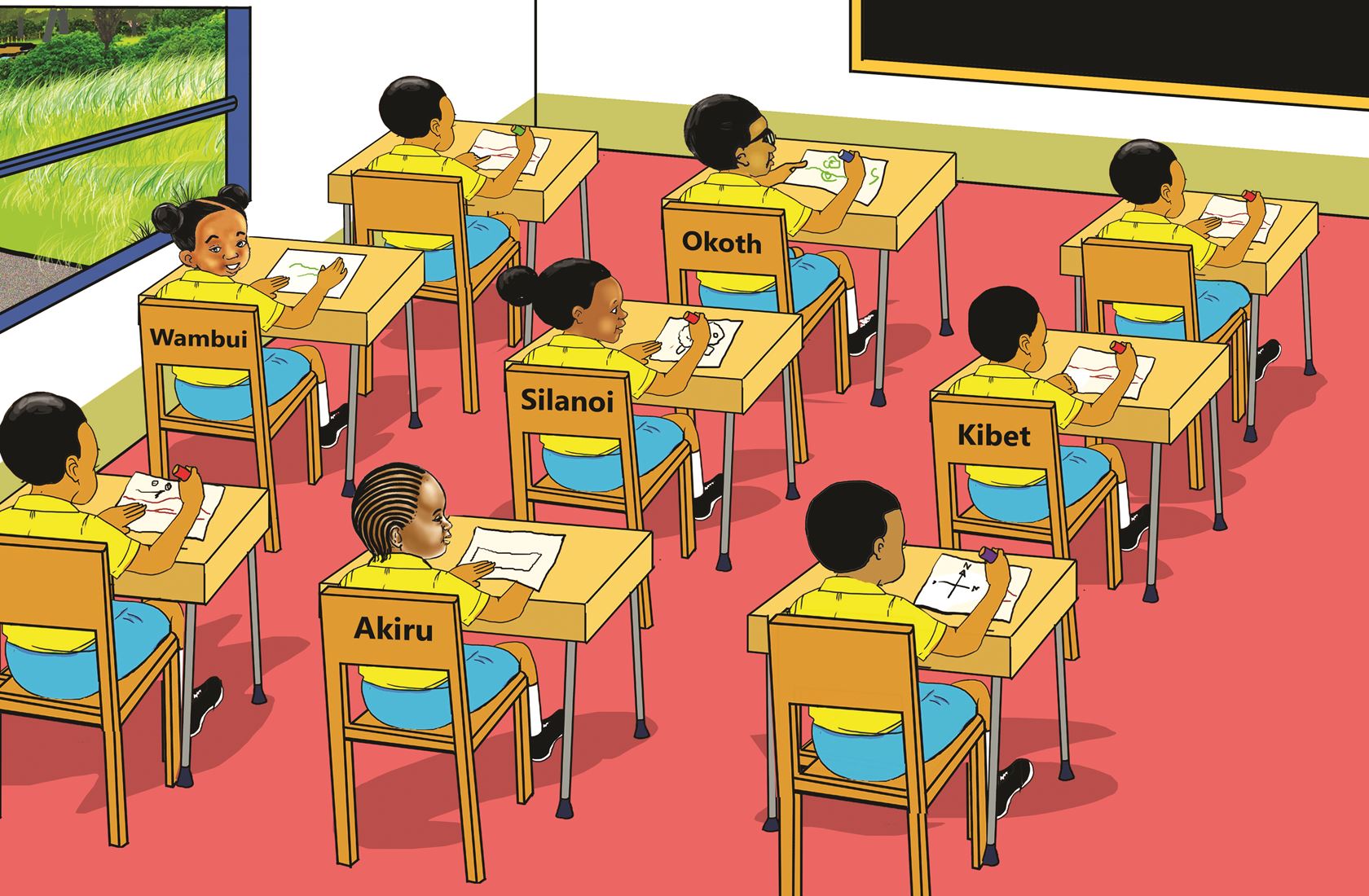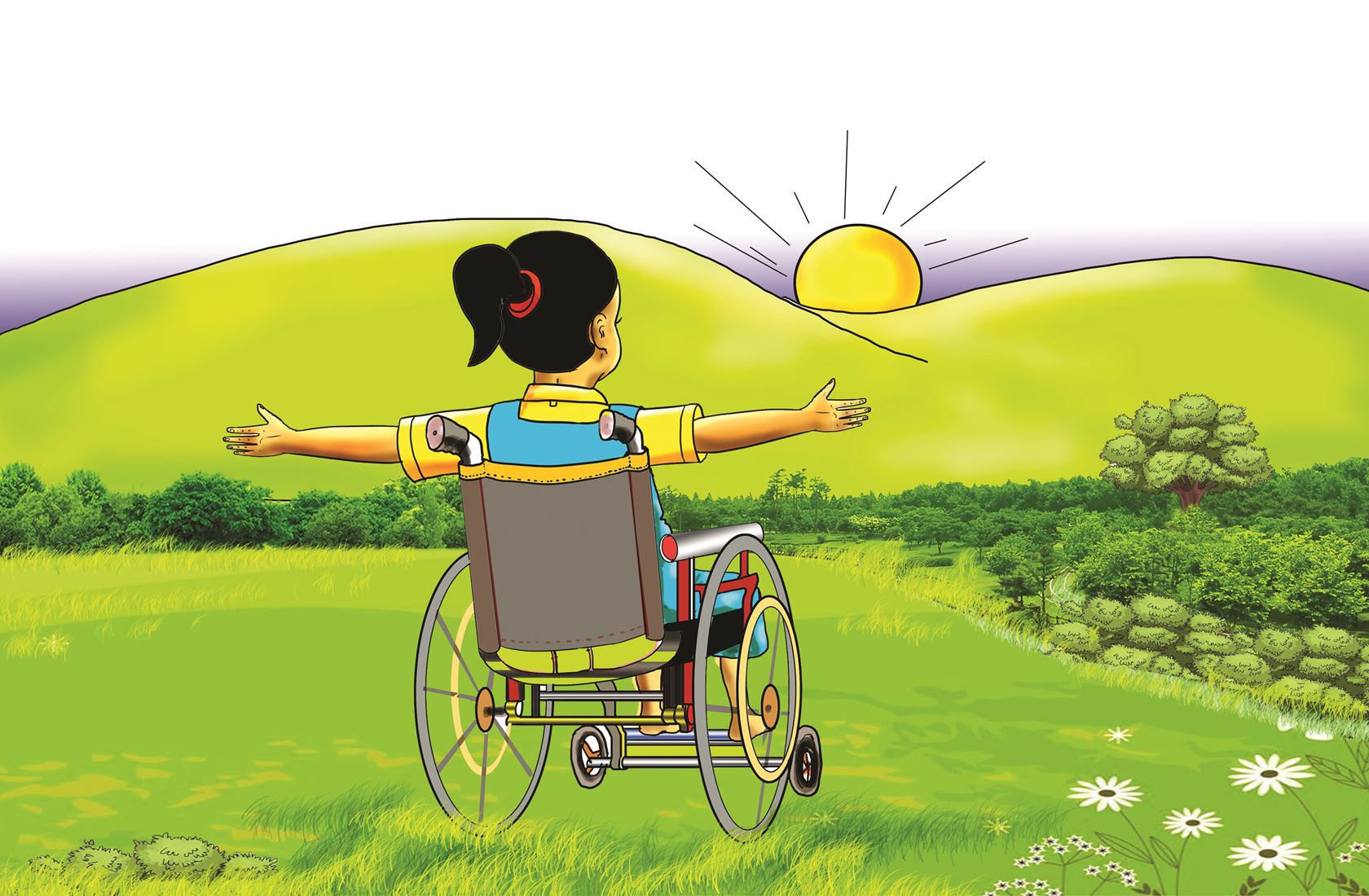Natural environment refers to all living and non-living things that occur naturally. For example, plants, mountains, hills, and rivers.
Compass direction
Activity 1
Read the story below and answer the questions.

My name is Silanoi, I am in Grade 4. I have classmates, and we share items in our class. Wambui sits to my left. Kibet sits to my right. Okoth sits in front of me. Akiru sits behind me. I love my classmates.
- Who sits to Silanoi’s right?
- Name some of your classmates.
- Who sits to your left in your class?
- Who sits to your right in your class?
- Who sits in front of you in your class?
- Who sits behind you in your class?
Activity 2
In pairs, look at the picture below and answer the questions.

If the direction the child is facing is East:
- Where is their back facing?
- What is the direction of their right hand?
- What is the direction of their left hand?
- Draw a compass.
Pair work
Use the compass you have drawn to answer the following question:
- Name the learner sitting to your:
- East
- West
- North
- South
Group work
- Go outside.
- In groups of five, choose a group leader.
- One learner will stand in front of the group leader, one behind, one to the right, and another to the left.
- Each of you will draw a line to where the group leader is.
- Label the four points to make a compass.
- Use the compass to tell the direction of different parts of your school.
- Play a game of telling the direction of other learners from where you are.
Key points
- A compass is used to tell the direction of one place from another point.
- The compass has four main points: North, East, South, and West.
- The adjacent diagram shows the four cardinal points of a compass.
- East shows the direction from which the sun rises.
- West shows the direction to which the sun sets.

Fun point
- Identify the cardinal points of a compass from the poem by clicking on them.
